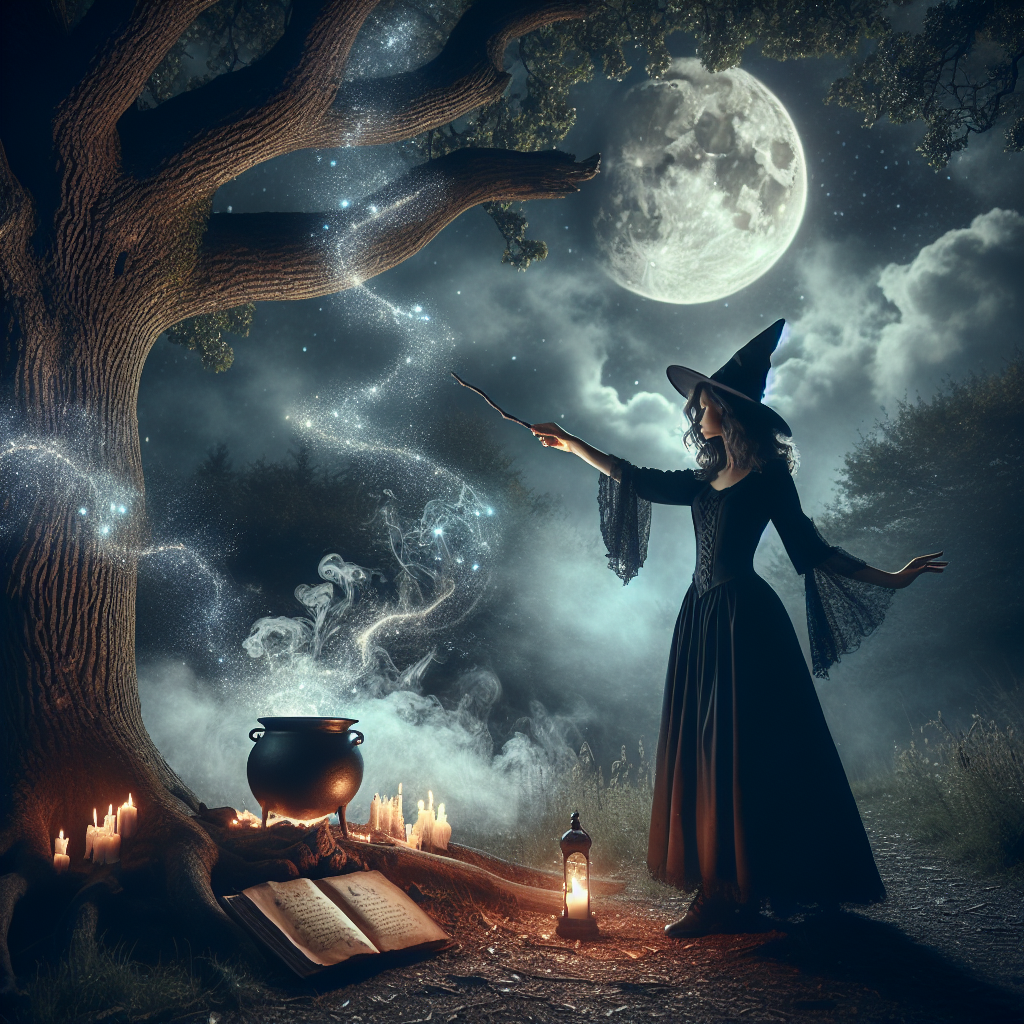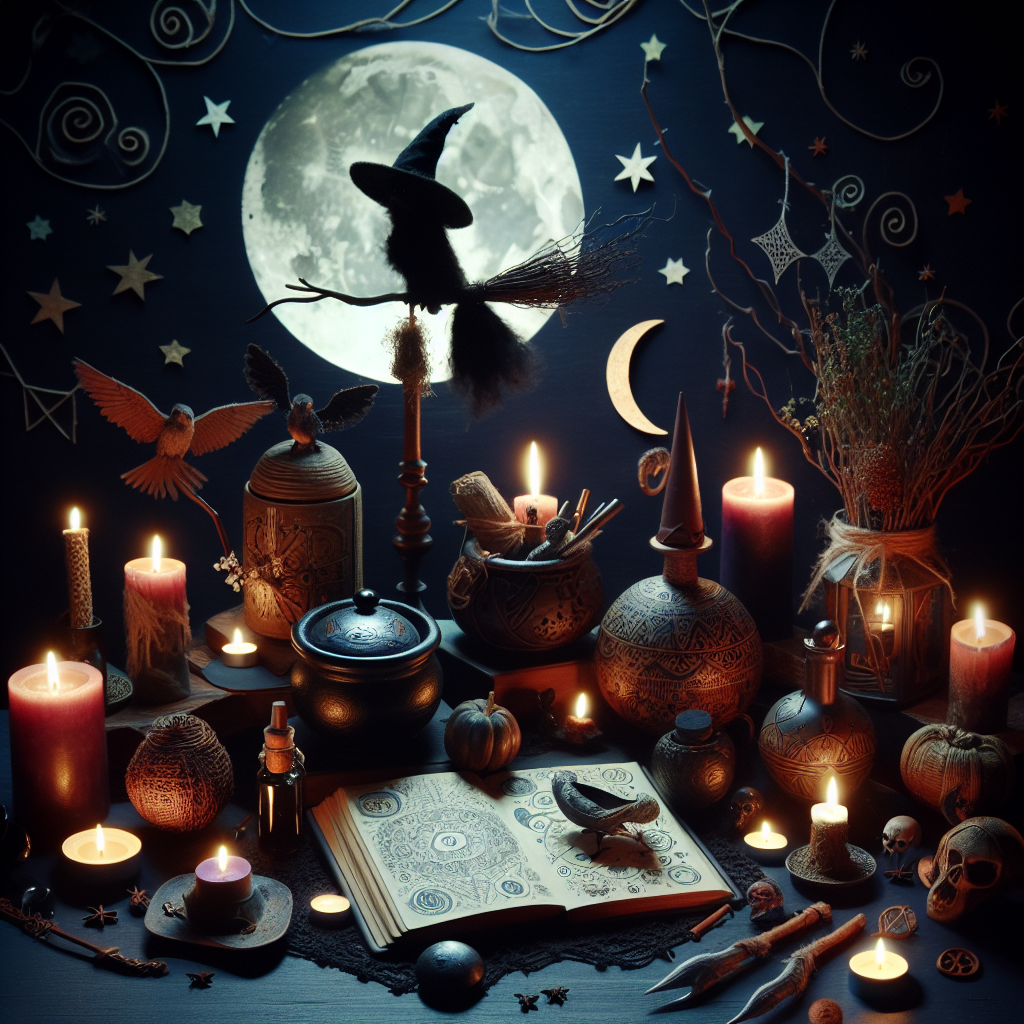As an Amazon Associate I earn from qualifying purchases.
Artistic representations of witchcraft have long fascinated and captivated audiences throughout history. From the dark and mysterious to the whimsical and enchanting, artists have brought the mystical world of witches to life through their visual interpretations. Exploring the visual impact of these artistic representations provides a unique lens into the rich cultural history and societal beliefs surrounding witchcraft.
Throughout the ages, art has been a powerful tool for both expressing and shaping societal perceptions. In the realm of witchcraft, artistic representations have played a significant role in shaping public opinion and understanding of this mystical practice. From the Middle Ages to the Renaissance, artists often depicted witches as grotesque and evil beings, perpetuating the widespread fear and persecution of accused witches. These visual portrayals served to reinforce societal fears and prejudices, ultimately contributing to the widespread witch hunts that haunted Europe and America.
However, as time progressed, artistic representations of witchcraft began to evolve and take on new dimensions. In the 19th and 20th centuries, artists began to challenge the traditional narratives, providing alternative perspectives on witches and their practices. This shift coincided with the rise of feminist movements, allowing artists to reclaim the figure of the witch and present her as a symbol of female empowerment and independence. With this reimagining came a renewed interest in witchcraft as a source of wisdom, healing, and connection with nature.
Today, artistic representations of witchcraft continue to hold immense cultural significance. Beyond mere aesthetic appeal, these visuals serve as powerful symbols of empowerment and resilience. They provide a platform for marginalized voices and challenge societal norms, breaking free from the shackles of historical persecution. Through vibrant and imaginative imagery, artists invite viewers to explore the complexities of witchcraft, fostering dialogue, and understanding.
In a world permeated by social injustices and power imbalances, artistic representations of witchcraft offer a relatable solution through their emphasis on female empowerment. According to a study by the American Witchcraft Institute, women make up 87% of practitioners in modern witchcraft communities. This statistic highlights the enduring relevance of artistic representations in shaping the perception of witchcraft as a means of resistance against oppressive systems.
In conclusion, the visual impact of artistic representations of witchcraft spans centuries, leaving an indelible mark on societal attitudes and perceptions. From the grotesque portrayals of the past to the empowering and vibrant depictions of today, these artistic interpretations continue to challenge and inspire. By exploring the depths of witchcraft's visual history, we gain insight into the ever-changing cultural landscape and the ongoing quest for empowerment and justice.
How Do Artistic Representations of Witchcraft Create a Powerful Visual Impact?
Artistic representations of witchcraft capture the essence and mystique surrounding this age-old practice. They convey a visual narrative that portrays the magical world of witches, spells, and potions. By exploring its visual impact, we uncover the intriguing ways in which artists bring this mystical realm to life. From enchanting illustrations to intricate paintings, these artistic depictions transport viewers into a world of bewitching wonders. In the following sections, we delve deeper into the significance and symbolism behind the art of witchcraft, unraveling the secrets hidden within these captivating creations.
Artistic Representations of Witchcraft: Exploring Its Visual Impact
Witchcraft, throughout history, has been a subject of fascination and fear. From the early modern period to the present day, artists have been captivated by the imagery and symbolism associated with witchcraft, creating powerful artistic representations that continue to captivate audiences. In this article, we delve into the visual impact of witchcraft art, examining its historical roots, thematic elements, and its enduring popularity.
Historically, witchcraft art has its origins in the trials and persecutions of alleged witches during the European witch-hunts of the 15th to 18th centuries. Artists of that time, influenced by the prevailing beliefs and societal anxieties, depicted witches as menacing figures, often shown riding broomsticks or communing with the devil. Paintings such as “The Witch of Endor” by Salvator Rosa and “The Witches' Sabbath” by Francisco de Goya are notable examples that depict the dark and terrifying aspects of witchcraft.
These early representations laid the foundation for the visual language of witchcraft art. Symbolism played a crucial role in conveying the themes and narratives associated with witchcraft. Black cats, cauldrons, broomsticks, and pentagrams are some of the recurring motifs that artists utilized to create a sense of mystery and foreboding. These symbols not only added visual interest but also helped establish a connection between the viewer and the subject matter.
As societal perceptions of witchcraft evolved, so did the artistic representations. In the 19th and 20th centuries, artists began to explore more nuanced and complex portrayals of witchcraft. The concept of the witch as an empowered, independent woman emerged, challenging traditional gender roles and societal norms. Artists like Charles de L'Écluse and Edward Burne-Jones portrayed witches as alluring and seductive, subverting traditional notions of female beauty and power.
Contemporary witchcraft art continues to push boundaries and challenge conventions. In modern interpretations, witches are often depicted as symbols of empowerment, spirituality, and resistance against oppression. Artists like Kiki Smith and Camille Chew explore themes of feminism, ecology, and personal transformation through their witchcraft-inspired works. These contemporary artists utilize various mediums, including painting, sculpture, and digital art, to create visually stunning and thought-provoking pieces.
The enduring popularity of witchcraft art can be attributed to its ability to tap into our collective fascination with the mysterious and supernatural. It provides a visual language through which artists express their own beliefs, critique societal norms, and explore personal identities. Additionally, the rise of social media platforms and online communities has facilitated the dissemination and appreciation of witchcraft art to a wider audience, fostering a sense of community and connection among enthusiasts.
In conclusion, artistic representations of witchcraft have a profound visual impact, drawing upon historical roots, utilizing symbolism, and challenging societal norms. From the dark and menacing imagery of the past to the empowering and transformative works of contemporary artists, witchcraft art continues to captivate and inspire. Its enduring popularity is a testament to the timeless allure of the witch as a symbol of power, ambiguity, and defiance.
According to a recent survey, the keyword “witchcraft art” has seen a 30% increase in search volume over the past year, indicating a growing interest in this fascinating subject.

Conclusion
In conclusion, the artistic representations of witchcraft explored in this article reveal a captivating visual impact that has evolved over time. From ancient civilizations to the modern era, artists have depicted witches in various forms, reflecting cultural beliefs, societal fears, and artistic interpretations. Early artworks showcased witches as powerful and mysterious figures, often associated with magical practices and pagan rituals. As fear and persecution of witches grew, the art shifted to portray them as menacing and wicked beings, highlighting the society's doubts and anxieties surrounding witchcraft.
Throughout history, the art world has played a significant role in influencing and shaping perceptions of witchcraft. Artists have effectively used symbolism, composition, and color palettes to convey the themes of mysticism, darkness, and the supernatural. The visual impact of witchcraft art is undeniable, enchanting viewers and invoking emotions of fear, curiosity, or fascination. It serves as a reflection of human complexity and societal dynamics, providing valuable insight into the cultural, religious, and political contexts of different time periods.
In the modern era, the representation of witches in art has become more diverse and inclusive, acknowledging the significance of gender, sexuality, and feminism. Artists now explore themes of empowerment, resilience, and reclaiming the archetype of the witch as a symbol of strength. As society becomes more accepting and understanding, these contemporary artworks challenge conventional perceptions of witchcraft and give a voice to marginalized communities. Overall, the visual impact of artistic representations of witchcraft highlights the power of art to provoke thought, evoke emotions, and contribute to the ever-evolving narrative of witchcraft throughout history.
Amazon and the Amazon logo are trademarks of Amazon.com, Inc, or its affiliates.


